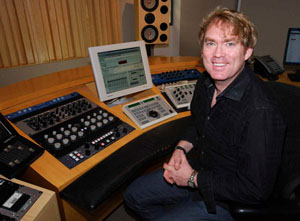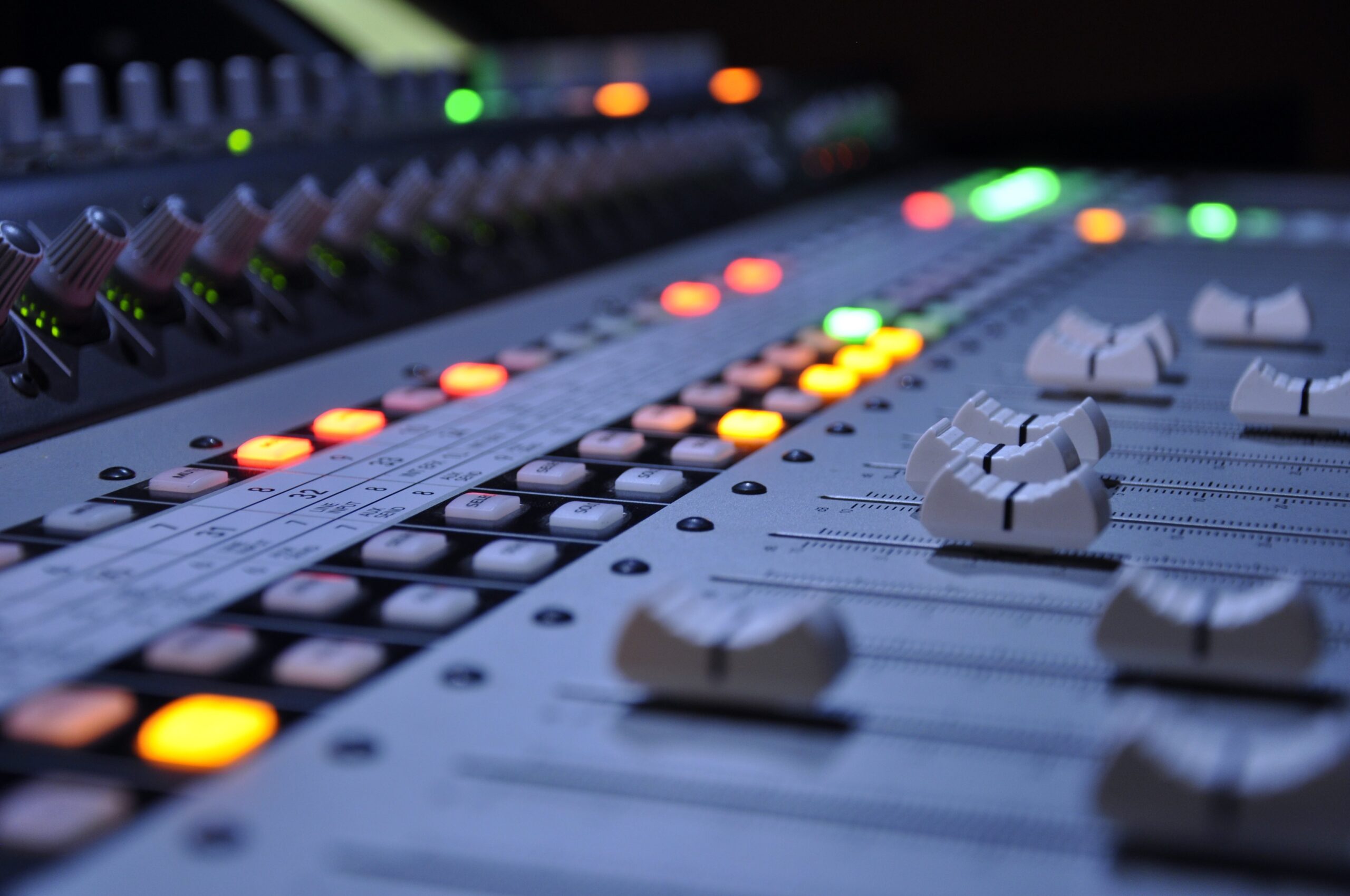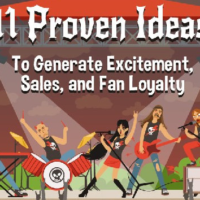The Difference between Mixing and Mastering
This interview was first publishing in 2015
Mark Christensen is the owner of New York City recording facility Engine Room Audio and has over 35 years of experience in the music industry. He started out as an artist, touring in the Midwest at 16 with his original progressive modern-rock material and beginning his production career at 19. He spent three years in England and toured briefly with acts such as The Waterboys and The Clash while producing numerous independent records, eventually moving to New York City. While working as a line producer at Soundtrack City, he self-produced a demo which ultimately resulted in a record deal and another round of tours with bands like Radiohead, The Wallflowers and The Gin Blossoms. Mark opened one of the first upscale restaurants in New York City’s East Village, but ultimately decided to pursue his passion for mastering and production by launching Engine Room Audio, a business focused on providing production, engineering and manufacturing support to a wide range of talented musicians. Mark has become one of New York’s most highly-regarded Mastering Engineers and has worked with hundreds of labels, major corporations and artists, including 50 Cent, Trey Songz, OK Go, Depeche Mode, Sia and Soulja Boy.

I talked to Mark about the differences between the music mixing and mastering processes and the critical qualities of a “radio-ready” song. He also shared some important advice for artists and producers just starting out who want to build successful, long-lasting careers in music.
MCon:
Thanks for taking some time to chat, Mark. How did you get into the music industry?
MC:
I was an artist for a long time and was in a few bands that were signed. At some point, I wanted to get out of that. I ended up opening a restaurant in the East Village in New York City, but got a record deal while I was running it and ended up deciding to sell. I had a little bit of cash left over and wanted to start some kind of small business. And this was back in the day of cassettes, so I bought a business that was doing duplications: high-quality, real-time cassettes.
I always had a small studio in my house, and I was getting requests from clients to start doing mastering. Initially, I really didn’t even know what that process entailed. But I started doing mastering for these duplication clients – hundreds and hundreds of hours-worth – and realized I really enjoyed it.
The record I did with the band I was in, Thirst, did really well. We toured opening for Radiohead in 1996 and had a couple Top 20 radio songs. It was a lot of fun, but there were a lot of political issues attached to being in a band like that. And our record label, Iguana sold their alternative division to Interscope Records. Our album got caught between the cracks of that transition.
By the time Thirst was getting ready to do its second record, the whole production universe had become more interesting to me than anything else. I decided to go professional with my mastering business and built a production complex over on Lafayette Street, where I decided to “hang out my shingle” and offer my services to the general public. By that time I’d already done a huge quantity of mastering, but none of it had been on a retail level; I had just been doing it for duplication clients.
Since I began my business, the projects have just been getting more and more interesting. We’re now a full-fledged recording studio. When we moved to our new facility, we built a big SSL room upstairs. We also have production suites that we lease out to resident producers. They aren’t affiliated with us in a business context, but synergistically, we share resources. We have quite a few studios: seven smaller rooms leased out to in-house producers; the SSL room upstairs; my big mastering room.
When people ask me what my main focus is, I say, “Mastering is my day job and producing is my hobby.” While I usually get paid to produce, mastering is where my heart is.
MCon:
I would imagine having the creative energy of all those people in one place really builds the business.
MC:
Yeah. We have seven producers doing their thing. And the manufacturing is still a part of the business. But cassettes have, of course, disappeared, and CDs are becoming less prevalent.
MCon:
I wanted to talk to you a bit about the mastering process. I’ve been playing bass for 20-some years and have played on a handful of records. I am by no means a first call on an album, but if worse comes to worst, I can hold it down. Still, I admit, I have no clue what the difference is between fine tuning a mix and mastering.
MC:
There is definitely a tried and true method of making an album, and mastering is the forgotten step; it’s the final piece of the puzzle. Most producers and mix engineers understand that mastering is something they ought to be doing. A lot of people are in the same boat you are in, though: They don’t really understand what is happening with mastering. I will say that being a mastering engineer has made me a much better mix engineer. And when I mix, I think I get a better understanding of what the mastering process is actually doing to a recording.
Mastering can be kind of hard to explain, and I think that’s why there’s a mystique around it. Mastering engineers listen a little differently from how most people listen. We have different objectives and do different things with the signal flow.
To elaborate on that, when you have a properly-put-together record, the mixing engineer ought to be mixing for actual mix; that person has to make sure the balance between the instruments is correct. At the beginning of audio and recorded music, mix engineers were originally called “balance engineers.” And that’s really what you need to be doing as a mix engineer: Making sure that the individual musical elements are set up with the right EQ structure and have the right dynamic range, and that the overall mix is pleasing to the ear. What you should not be doing as a mix engineer is mixing for volume. You shouldn’t be trying to make a loud mix or a “present” mix. Those elements are in the domain of the mastering engineer.
I tell people that even if you are going to end up mastering it yourself because of budgetary constraints, you still have to respect the mastering process as part of the record-making process.
MCon:
I run across a lot of guys who like mixes that are burned almost to the point of clipping, not realizing there is going to be a mastering process to polish everything.
MC:
I’ve seen that myself, and it’s definitely a function of the Digital Age. I tend to blame the salesmen at places like Guitar Center for this. People buy all these plug-ins, because the gear manufacturers are trying to sell people new products they don’t have. But artists end up purchasing tools they don’t really need and then reverse engineer a use for it.
That’s also what has happened to some extent with the mastering plug-ins. If you don’t have the budget to send it to a mastering engineer, having those tools at your disposal can be a good thing. And if you are a working, professional studio owner or mix engineer, many times putting some type of “ghetto mastering” on an album is good so clients can listen to it in the car on the way home and not have it be distant sounding or non-competitive with the other CDs in their CD changer. So, there is an immediate application for some of these tools. I definitely see high-end mix guys doing “quickie” mastering for clients to listen to and reference. But then they keep the un-mastered versions of the songs to send to the real mastering guy later. And that’s actually a fairly smart way to work.
When the mastering guy gets the files, he is concerned with making it radio ready. There are two parameters that determine “radio readiness.” In the digital domain, we have an absolute ceiling that we’re working with: 0 db full scale. The loudness of any project is going to be determined by the average between the average dynamic output and the peak dynamic output. Since we know where the peak is – 0 db full scale – what we’re working with is manipulating that average dynamic output so it can get as close to the peak as is reasonable, so the song is “present” and competitive with other songs on the radio. When the FM transmitters get a hold of the song, we don’t want it to be too brittle, “present” or crispy sounding or to disappear and be inaudible.
The other culturally-defined parameter is the EQ structure. There is no such thing as the “mathematically-correct” amount of high end, or the “mathematically-correct” amount of low end. Those things are all culturally determined. You want to pocket your product in a place where it makes sense to your consumer. If your consumer is used to listening to a certain type of record, then suddenly you give them a record that is incredibly bright in comparison, it will hurt their ears, and they will want to stop listening. On the other hand, if you give them something that is too dark in comparison to what they are used to listening to, they will not be able to hear it.
There is a little bit of strategy and interpretation involved in trying to “pocket” a product, depending on what type of music it is and what the artist is trying to achieve musically and artistically. A good example of this idea is some of the early Kanye West albums. Those were pretty quiet, dark records. He made those choices on purpose, because he wanted his music to inhabit a slightly different space from some of the more aggressive, bright records that were out at the time.
MCon:
You’ve been in music for 30 years at this point. And you have an interesting perspective on the business, because you’ve been in a band, toured, recorded and worked behind the glass in a studio. What advice would you give someone just starting out?
MC:
I was always a person who wanted to do things on my own. Musically, when I started out, I followed the punk ethos and have always had a “DIY” mindset in general. Even when I decided to get into engineering, I was more interested in learning how to do things myself than being taught how to do things by someone else. If I were going to give advice to someone like myself, it would be to learn how to listen to other people. I think you have to learn how to weed out the crappy advice and work with the good advice.
As I get further along in my career, I realize there were a lot of people telling me useful things when I was younger. And had I listened to them at the time, I would’ve been much better off. Sometimes when you are concerned with being self-sufficient as an artist, you forget that other people have had experiences and have gone through the process themselves. And some of their advice might be worthwhile. In the Digital Age, where everyone thinks they can buy any application, put it on their laptop and do it all themselves, it’s easy to forget that you really need the experience of other artists and professionals to guide you.
There’s actually not a single record I’ve mastered that hasn’t made me think, “This person would’ve benefitted from a stronger producer.” There are a lot of people I work with who are great artists with solid projects. But if they had used a real producer, a real mix engineer and a real studio instead of doing everything themselves in their mother’s kitchen, they would’ve had a substantially better product.
To learn more about Mark Christensen and his studio work, visit the Engine Room Audio website: http://engineroomaudio.com/









